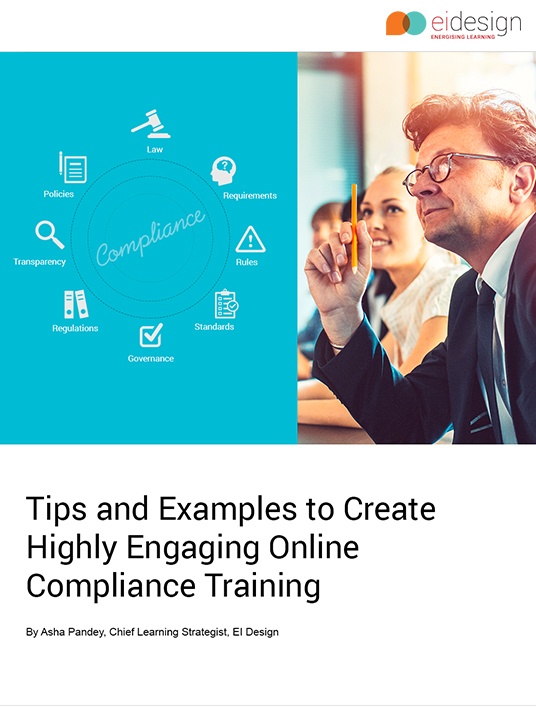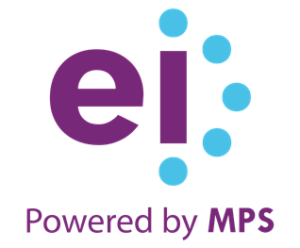How To Encourage Employees To Comply With Compliance Training
There are 3 key reasons why employees dread compliance training:
- Compliance courses can be boring. When you throw at your learners dry concepts such as dos and don’ts and a set of guidelines you want them to follow, you’ve got to expect some boredom at the other end.
- Add to that the fact that they’re taking the course because you’re asking them to and you have more reasons to fear that learners may not be able to relate to, internalize, and apply the information.
- Besides, learners are not quite fond of the traditional going through of information followed by a quiz. If there’s nothing in the course that can engage them, nine out of ten times you’re likely to put your learners off. This will have a direct impact on the learning effectiveness and eventually your ROI on Compliance trainings.

It is evident that these aspects must be taken into consideration if we want to engage the employees effectively with the compliance mandate and instill the spirit of “why comply with compliance training”.
What Can Be Done To Make Compliance Training Engaging For Learners?
Before getting on to the tips to get your learners to engage meaningfully with compliance trainings, I would like to outline what should not be done:
- Don’t treat compliance training like a bitter pill that everyone should swallow (even though it will make them feel better).
- Don’t make the information preachy or prescriptive (adult learners hate this).
- Don’t use the most predictable format in eLearning - page turner and a quiz (avoid “boring” formats).
What Are The Tips That Will Encourage Employees To Comply With Compliance Training?
Instead, you can use the following tips to encourage your employees to comply.
1. Change The Tone Of Communication.
Instead of focusing on only the dos and don’ts, highlight why a given approach is mandated. As adults, we are likely to pay heed if the consequences are laid out clearly so outline the consequences of non-conformance to the learner and to the business. However, as you do so, make sure that you don’t throw legal jargon at your learners. Instead:
- Use the complex situations and present them in a simplified way to your learners.
- Put your learners in dilemma situations and ask them to choose the right thing to do.
- It doesn’t stop there. Show them the consequences of the decision they took and pose another challenge to check if they’ve learnt from the previous one.
2. Provide Flexibility To Learners.
Rather than making the completion of training as a “mandatory course to be completed in the next 7 days”, provide flexibility to learners. By opting for mLearning or mobile learning, you can easily provide the control to the learners encouraging to learn on the device of their choice and learning when they want to. Once they have this flexibility, they will take up that compliance course when they “want to” rather than when they “have to”.
3. Innovative formats.
Do away with traditional eLearning course designs where learners have to laboriously wade through high volume of content. Instead, opt for innovative approaches that will increase the engagement quotient manifold. Some of the approaches we have used include:
- Gamification.
- Partial gamification.
- Scenario-based.
- Story-based (storytorials).
- Personalizing the experience for learners: We did this by using “avatars” that they can relate to and conveyed the message on compliance effectively.
4. Leverage On The Current Trends That Engage Learners.
Today, you can integrate microlearning and social learning easily into your compliance learning strategy.
Use the innovative, bite sized format of microlearning to get your message through more effectively. Also, use social learning to create communities of compliance practice to drive the required behavioral change.
Take a look at this short video to see how you can make your compliance courses engaging using gamification and microlearning approaches.
5. Continue The Engagement After The Formal Training.
Provide reinforcement post the formal training through Performance Support Tools (just-in-time learning aids or job aids) that are bite sized and can be made available to learners on their smartphones. This will help them retain the message and increase the probability of its application. You can use this channel to update specific aspects, highlight consequences (through case studies or real world examples), and practice sessions (real life scenarios).
I hope the article provides you with the cues that will enrich your compliance training strategy thereby increasing the engagement with your learners. If you have any queries on how you can uplift your existing learning strategy to make your compliance courses engaging and fun, do contact me.










